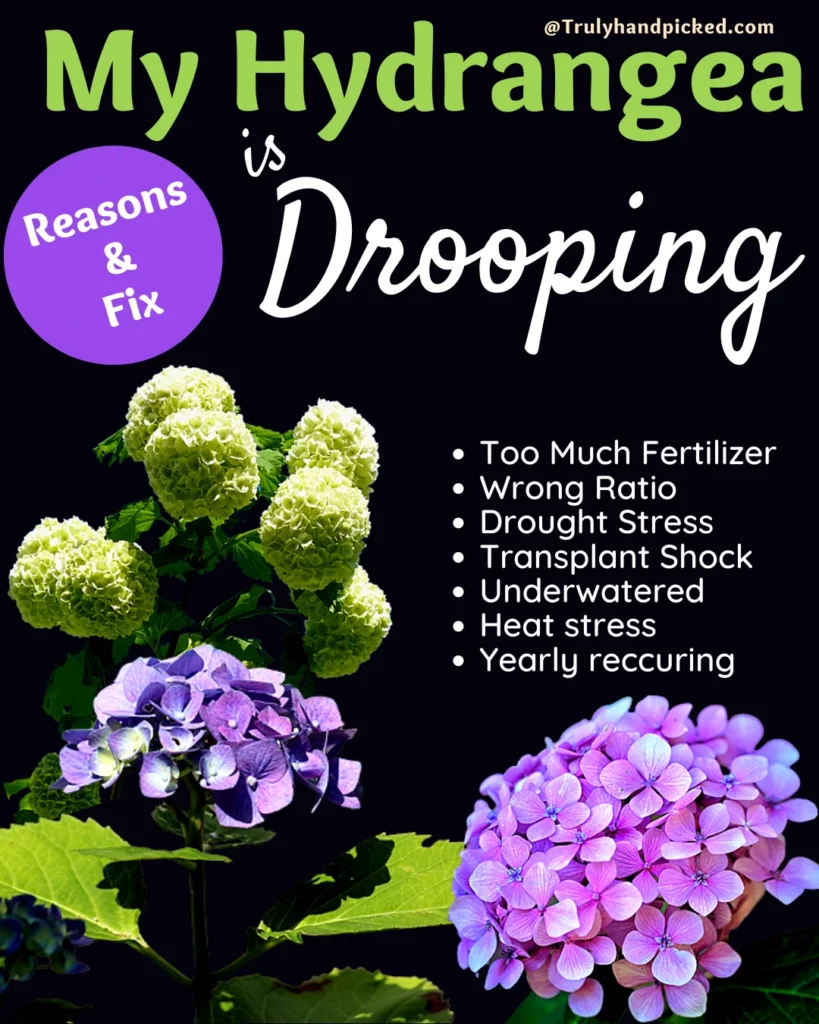Sometimes an unwanted thrive on your hydrangea plant leads it towards a leggy form. This problem occurs when a plant grows taller than the height its stem can support.
This spindly condition let the top of the stem drop down to the ground, especially when it started blooming. A growing hydrangea mostly turns leggy due to insufficient sunlight.
Every plant thrives on its light source. When a growing hydrangea can’t get adequate sunlight, it often tries to reach for the possible sunlight it can grab in its way.
This condition makes the top section dense comparing the bottom section, and the plant turns leggy.

Why My Hydrangea is Leggy -How to Fix
You should take some initiative to control and get rid of this condition as soon as you can. Some of the most effective tips in this attempt are as follows-
Give Your Plant Enough sunlight:
Place your plant in a sunny location and make sure it can grab 6-8 hours of bright light daily. Never let your plant be eager for sunlight and provide artificial light if you live in a place lacking sunlight.
Trim Down Shady Foliage:
Trim down the big foliage out of your plant, especially those that are blocking the sunlight. These kinds of large leaves cast an unwanted shadow on your plant and make it keen for sunlight. This way your plant turns leggy eventually.
Related: How often to feed your hydrangea and how to make it bushy
Relocate Hydrangea:
Recollecting a growing hydrangea can boost the growth of your plant and improve the growing condition efficiently. Place the indoor plant in an east-facing window and for outdoor plants, take them away from the shade of big trees.
Prune Yearly:
Sometimes unpruned hydrangea also tends to be leggy after a certain period. So, a growing hydrangea should be pinched off and get pruned all the time. So, prune your plant yearly and never let the growth overtake the support of the stem ever.
Provide Support:
Hydrangea is a quick grower and holds fragile stems pattern comparing other long-stem houseplants. Hence, giving your growing hydrangea a little support would be a great idea indeed. Install a support stake around the main stem of a growing hydrangea, particularly when it starts blooming.
Related: Why my hydrangea is not flowering
How to Make Stems Stronger:
To make the stem of a growing hydrangea plant stronger naturally, you can try these hacks attentively-
- Trim off dead wood from a mature hydrangea and cut it at the base of the plant
- Trim hydrangea, which blooms on new woods 12-24 inches tall from the ground
- This way you will let the branches chance to grow thicker naturally
- Once you cut the new wood this way, the new shots will emerge with a stronger base
- You can try one smarter move here by cutting the newly established plant in half in its first year
- It may let you sacrifice the blooms of the first year and leads you toward a stronger stem for sure
- You can repeat the process in the second year of your hydrangea as well to make the stems even stronger than ever
- Don’t forget to pinch off the growing tips of a hydrangea plant, once the pruned shots begin to grow again
- It would help if you remembered that shorter stems are always thicker and stronger than the longer ones
Related: Why my plants and seedlings are leggy how to fix it
Why My Hydrangea Drooping?
Dropping hydrangea is a typical problem with the utmost species of this plant. When the growing circumstance doesn’t suit the compatibility of a growing hydrangea plant, it often suffers from drooping issues.
If your house hydrangea is grieving with the same, you must find the actual cause and apply possible remedies instantly before it turns fatal. Here are the most common causes of this issue along with their probable solutions-
Reasons & Fix
Overfertilization:
- It means you may feed your plant more often than its actual needs
- Or maybe you keep the nitrogen content on the fertilizer high and that leads to a larger level
Solutions:
- Try to test the soil before doing the first fertilization after the plantation
- Feed your hydrangea according to the need of your selected species and only with half of the strength for the utmost times
Related: Why my polka dot plant is drooping and not flowering
Fertilization with Wrong Ratio:
- If you keep the nitrogen level of your chosen fertilizer always high than potassium and phosphorus, it may lead to uneven growth of your plant
- Or if you don’t dilute the fertilizer before using and apply it with the full strength
Solutions:
- Keep the nitrogen level lower in your fertilizer by comparing phosphorus and potassium
- Always dilute the all-purpose commercial fertilizer with half of its strength before applying
Heat Stress:
- This problem may appear when you put your plant unsaved under the dappled afternoon sun
- Or when you keep the plant in a spot with a temperature above 90° F
Solutions:
- Let your plant be exposed only under the morning sun and get cover during afternoons
- Never let your plant stay in a temperature that is above 86° F, ever
Drought Stress:
- This condition hits your hydrangea when you don’t water your plant for more than one week
- Or if you don’t increase the watering schedule of your growing hydrangea plant according to its sun exposure
Solutions:
- Water your plant weekly without any skipping schedule
- And always use mulching around the base of your plant during the scorching summer days
Transplant Shock:
- If you transplanted your plant recently and can’t give it enough time to settle down
- Or when you repot and rotate your plant often in an improper season
Solutions:
- Don’t start your transplanting process until the end of September
- Try to finish in the summer and choose the best suitable spot to place your newly transplanted hydrangea to set it well
Yearly Problem:
- Sometimes drooping can occur in a growing hydrangea plant as a yearly problem
- The possibility of this yearly issue increase with congested hydrangea stems with more and more flower buds
Solutions:
- Have patience once the yearly issue has occurred and let it pass uninterruptedly
- Provide central support to your plant with a sturdy stake to let it grow upright without any drooping form
Underwatered Plant After Cutting The Blossoms:
- This may happen when you don’t water your hydrangea after cutting the flowers
- Or if you cut them straight and let the sticky substance, get stiff on the cut of the stem
Solutions:
- Attempt to cut the flowers at an angle
- Water the plant with lukewarm water immediately after you make the cut
This way, the stem will hydrate enough to grow the new shots and the warm water will prevent the sticky substance from forming thicker on the stem.
FAQ: When Should You Cut Back Hydrangea Plants?
You can cut back the hydrangea plant once the flowers stop blooming in summer. Try to complete the process within July or August’s first week. Never trim your hydrangea plant during spring or winter or even in fall. This time your plant produces new shoots and buds thus, you may cut back the new buds in the process.
Where Do Hydrangeas Grow Best?
Hydrangea grows best when you sow it in a sloppy spot with light shelter and a partially open concept. It prefers a mild shelter where the hydrangea plant can get direct morning sun but a bit of shade from the dappled afternoon sun.
What To Feed Hydrangeas to Make Them Bloom?
Hydrangea mostly likes all-purpose balanced fertilizer to fulfill its nutrient needs. However, you should increase the phosphorus and potassium content by comparing the nitrogen percentage in your fertilizer to stimulate its blooming capacity. You can keep the ratio 5-20-10 to get the best blooming form of your growing hydrangea plant.
What Does An Overwatered Hydrangea Look Like?
A growing hydrangea plant with an overwatered issue can have some apparent unhealthy signs like-Yellow leaves, lack of buds, mishappened blooming, root rot, along with brown and wilted leaves.
How Long Does A Hydrangea Go Without Water?
Hydrangea is a thirsty species of herbaceous shrub family and thus seeks for weekly watering schedule. Sometimes, you need to water your plant two to three times a week. However, in winter, a hydrangea can stay without water for more than one month. It will be better to make the soil moist once in a while to keep the hydrangea healthy eternally.
